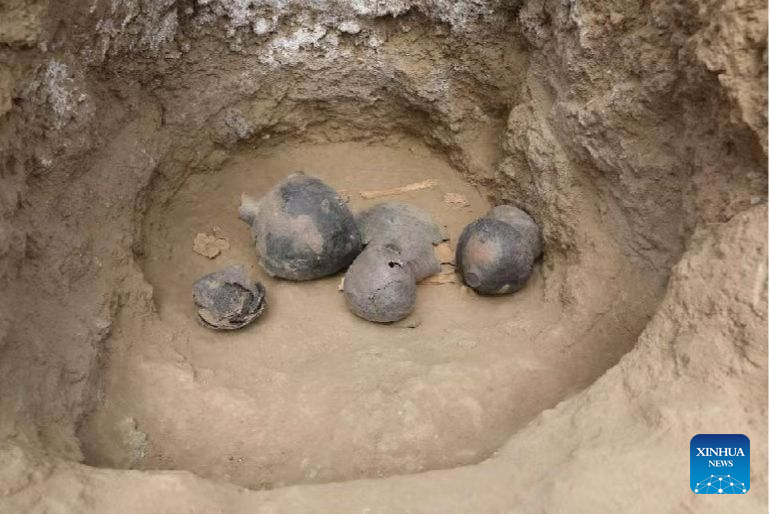China's Tibet discovers earliest cave tomb built 3,000 yrs ago

This undated file photo shows a tomb at the Gyelsang cemetery site of Nedong District in Shannan City, southwest China's Tibet Autonomous Region. (The Cultural Relics Conservation Institute of the Tibet Autonomous Region/Handout via Xinhua)
Southwest China's Tibet Autonomous Region has recently found the region's hitherto earliest cave tomb dating back to over 3,000 years in Gyelsang cemetery site of Nedong District in Shannan City.
The cave tomb was built around 1200 BC, according to carbon-14 dating data. A total of 40 ancient tombs, including cave tombs, stone tombs and earth-pit ones, were newly found at the site. They are believed to have been built between the 13th century BC and the seventh century AD during the reign of the Tibetan Tubo Kingdom.
Relics such as pottery, woodware and stoneware were also uncovered. Among all the funerary objects, the majority were pottery in special shapes with distinct regional characteristics.
The cemetery site is indicative of diverse cultures and exchanges and connections between different areas in the hinterland of Tibet at that time, said Tashi Tsering, a researcher with the regional institute of cultural relics protection.
The prehistoric cemetery also provides evidence that central Tibet had formed a relatively stable cultural area as early as the Shang and Zhou dynasties (1600 BC-256 BC), the researcher added.
In 2022, a joint archaeological team carried out an excavation at the Gyelsang cemetery site, with the total excavation area covering about 300 square meters. ■

This undated file photo shows cultural relics unearthed at the Gyelsang cemetery site of Nedong District in Shannan City, southwest China's Tibet Autonomous Region. (The Cultural Relics Conservation Institute of the Tibet Autonomous Region/Handout via Xinhua)

